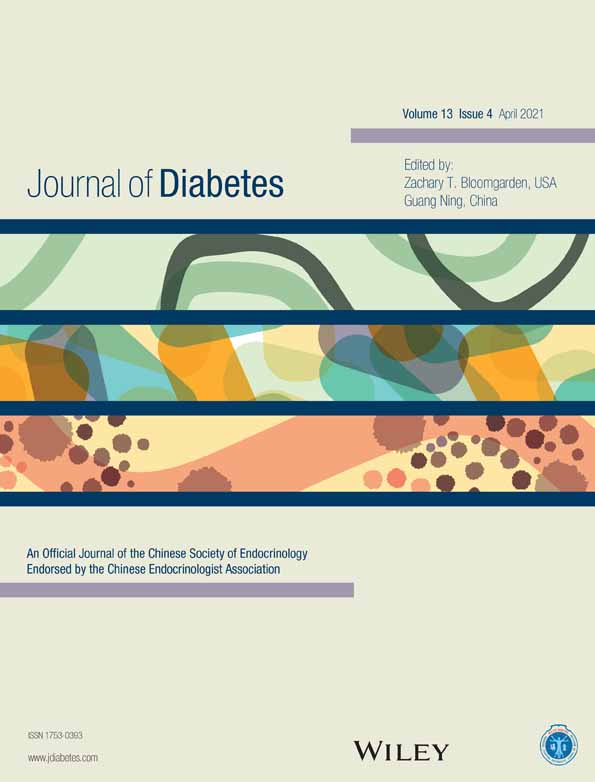Use of HbA1c in clinical practice: New insights
糖化血红蛋白临床应用的新见解
GLYCEMIC VARIABILITY AS RISK MARKER
Prospective 6.8-year follow-up of 3560 participants in the Look AHEAD study comparing those in the highest vs lowest quartile of glycosylated hemoglobin (HbA1c) variability showed roughly doubling and tripling of total and cardiovascular disease (CVD) mortality, respectively, with somewhat lower relative increases comparing the highest vs lowest quartile of fasting glucose variability.1 Intriguingly, there are multiple potential factors associated with glucose variability, which might typically be caused by lower levels of medication adherence, but which might be seen after hypoglycemia with subsequent reduction in efforts to control glycemia; higher levels of glucose variability may be associated with lower adherence to treatment of blood pressure, of lipids, of obesity, etc.2 The concept that greater glycemic variability is at least in part a marker of lower levels of adherence is supported by a recent analysis which simply calculated the percentage of occasions for each patient with either an increase or a decrease in HbA1c by more than 0.5%. Compared with those persons for whom no more than 40% of visit-to-visit HbA1c changes exceeded this amount, those with >40% to ≤80% of changes being by >0.5% had 50% to 70% increase in likelihood of lower extremity amputation, and those whose HbA1c changed by >0.5% more than 80% of the time had more than a tripling in amputation rates.3 Recognizing that a major change in an individual's approach to diabetes treatment leading to improvement in glycemia will also lead to an increase in glycemic variability (from the period of poor control to the period of improved control), our analysis of the relationship between HbA1c variability and outcome of the ACCORD trial excluded the first 8 months of treatment (during which most of the intensive glycemic treatment group showed maximal improvement); after 8 months, though, when the focus was on maintaining stable glycemic control, the average of the absolute differences between consecutive HbA1c measurements was more strongly associated with all-cause mortality than the mean HbA1c itself, and this association was stronger in the intensive therapy subset than among participants receiving standard therapy.4 The degree of the initial HbA1c response to glucose-lowering treatment of type 2 diabetes is certainly important: In a nearly 8-year study of >10 000 such persons with both pre- and posttreatment HbA1c measurement, HbA1c reduction exceeding 0.8% was associated with reduction in CVD events, although there is the caveat that larger declines with baseline HbA1c ≤7.8% were associated with greater likelihood of hypoglycemia, and with greater 1-year mortality.5
RELATIONSHIP BETWEEN HBA1C CHANGE AND CLINICAL OUTCOMES
The association of hyperglycemia with CVD outcomes appears to be linked to insulin resistance and to microalbuminuria: Among 1441 persons with type 1 diabetes participating in the Diabetes Control and Complications Trial, of whom 239 persons developed CVD during 29-year follow-up, higher heart rate and triglyceride levels led to stronger association of events with glycemia, and albuminuria amplified the association of glycemia with major adverse cardiovascular events (CVD death, myocardial infarction, or stroke).6 There has been some concern that the cardiovascular safety study of semaglutide showed an increase in retinopathy. In analysis of the association between reduction in HbA1c and worsening retinopathy in six randomized controlled trials of glucagon-like peptide 1 receptor agonists (GLP-1RAs) with a total of 49 936 participants followed for a median of 3.4 years, the strongest relationship between HbA1c change and retinopathy was seen at 1 year.7 Rather than representing a specific adverse effect of GLP-1RA treatment, this worsening of retinopathy appears to be a function of rapid improvement in glucose control, similar to that reported with intensive insulin treatment and with initiation of other potent glucose-lowering therapies.
LIMITATIONS OF HBA1C IN REFLECTING MEAN GLYCEMIA
In a study of 621 encounters, 91% with patients having type 1 diabetes, HbA1c estimated from continuous glucose monitoring analysis was within 0.1% of measured HbA1c in 11% of patients, but there were discrepancies of 0.5% or more in half, of 0.7% or more in one third, and of 0.9% or more in one quarter of patients.8 It is important for the clinician to realize that HbA1c may not show the same relationship with mean glycemia in all persons.9 There are suggestions of greater discordance in patients with anemia, particularly with iron deficiency,10 with renal insufficiency; with ethnicity, and there is similarly evidence with increasing age.11
The use of HbA1c in the management of diabetes began more than four decades ago.12 How can we use the new information about HbA1c in better treatment of diabetes? Certainly, glycemic control matters: HbA1c is a useful measurement in achieving glycemic control, and we should endeavor to improve this in all our patients.13 The growing information about HbA1c variability as a risk marker underscores the importance of consistent adherence to treatment in persons with diabetes, and it is intriguing to consider the potential effect of greater glycemic variability in increasing oxidative stress as a potential mediator of adverse outcome.2 A final point is the importance of discrepancies between HbA1c and “true” mean glycemia. It is not unusual for people with diabetes to have a higher (or lower) HbA1c than one would expect, and the use of continuous glucose monitoring offers an important tool in better understanding this phenomenon and in further optimizing clinical care.
血糖变异性作为风险标志物
前瞻性研究Look AHEAD对3560名受试者进行了6.8年的随访,比较糖化血红蛋白(HbA1c)变异最高和最低四分位数的受试者,发现总死亡率和心血管疾病(CVD)死亡率分别翻了约一倍和三倍,而与空腹血糖变异最高和最低四分位相比,相对增幅略低。有趣的是,有多个潜在因素与血糖变异性相关,这可能是由较低的用药依从性导致的,但也可能是因为在低血糖后对控制血糖的松懈造成的。血糖变异水平较高可能与对血压、血脂、肥胖症等治疗的依从性较低有关。最近的一项分析支持这样的概念,即较大的血糖变异至少在一定程度上是依从性较低的标记物,该分析简单地计算了每位患者HbA1c升高或降低超过0.5%的几率。与那些HbA1c变化不超过40%的人相比,那些HbA1c变化40%~80%的患者下肢截肢可能性增加50%到70%,而HbA1c变化超过80%的患者截肢率增加三倍以上。认识到糖尿病治疗方法的改变可以改善血糖,也会导致血糖变异的增加(从控制不良时期到控制改善时期),我们对HbA1c变异与ACCORD试验结果关系的分析排除了治疗的前8个月(在此期间,大多数强化降糖治疗组表现出最大的改善);然而,在8个月后,当重点放在维持稳定的血糖控制上时,连续两次HbA1c测量的绝对差值的平均值与全因死亡率之间的平均关联比平均HbA1c本身更强,而且这种关联在强化治疗亚组中比在接受标准治疗的参与者中更强。2型糖尿病患者对降糖治疗的初始HbA1c反应程度是非常重要的:在一项近8年的研究中,对超过1万名患者进行了治疗前和治疗后HbA1c检测,糖化血红蛋白下降超过0.8%与心血管事件的减少有关,需要注意的是,基线糖化血红蛋白≤7.8%的患者,其糖化血红蛋白的大幅度下降与低血糖的可能性更大,与1年死亡率更高也有关。
糖化血红蛋白变化与临床结局的关系
高血糖与心血管疾病结局的关系似乎与胰岛素抵抗和微量蛋白尿有关:在参与糖尿病控制和并发症试验的1441名1型糖尿病患者中,239人在29年的随访中发生了心血管疾病,较高的心率和甘油三酯水平与高血糖有更强的关联,蛋白尿则加强了血糖与主要不良心血管事件(心血管疾病死亡、心肌梗死或中风)的关联。有些人担心,索马鲁肽会增加视网膜病变的可能性。在对胰高血糖素样肽1受体激动剂(GLP-1RA)的6个随机对照试验中,共有49 936名受试者进行了中位数为3.4年的随访,分析了HbA1c降低与视网膜病变恶化之间的关系,糖化血红蛋白的变化与视网膜病变的关系在1年时最强。与GLP-1RA治疗的特定副作用不同,视网膜病变的恶化似乎是血糖控制迅速改善的结果,与已报道的强化胰岛素治疗和其他有效的降糖治疗类似。
糖化血红蛋白在反映平均血糖方面的局限性
在一项对621例受试者(91%的1型糖尿病患者)的研究中,通过连续血糖监测分析估计HbA1c,11%的患者HbA1c变异性在0.1%以内,有一半患者的差异在0.5%或更高,三分之一的患者在0.7%或更高,四分之一的患者在0.9%或更高。重要的是临床医生要意识到,HbA1c与平均血糖的关系可能并不是所有人都一样的。有研究表明,贫血患者,特别是缺铁患者,以及肾功能不全患者和不同种族的患者,差异都会更大,且随着年龄的增长,也有类似的证据。
HbA1c在糖尿病治疗中的应用早在40多年前就开始了。我们该如何利用有关HbA1c的新信息来更好地治疗糖尿病?血糖控制很重要:HbA1c是实现血糖控制的一种有用的测量方法,我们应该努力改善所有患者的这一指标。越来越多的关于HbA1c变异作为风险标记物的信息强调了糖尿病患者坚持治疗的重要性,也应该考虑到更大的血糖变异在增加氧化应激等不良结果的潜在影响。最后一点是糖化血红蛋白与“真实”平均血糖之间存在差异。糖尿病患者的HbA1c高于(或低于)预期并不少见,连续血糖监测的使用为更好地理解这一现象和进一步优化临床护理提供了一个重要工具。




